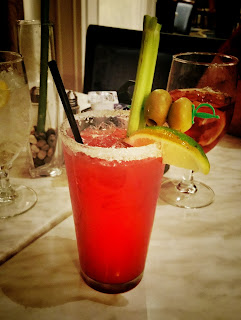Editing, Post Processing, Workflow
These are all terms that you've no doubt seen if you are thinking of getting into photography or already dabbling in photography. But if you are indeed "new" to photography you may not know what this means or what you need to do or how to even get started with it. And you've probably seen some smug jerk somewhere saying "blah, blah blah the photograph should be exceptional straight out of the camera. You should not have to do anything but minor tweaks to get the look you want. Everything should be done before the shutter snap. blah blah blah." I like to call these people purists. There's another word I use for them but I'm trying to make this blog user friendly for all ages.
There are many many many editing/ post processing programs out there today. And much depends on how you're taking your photos and where you plan to edit them. I know some people who ONLY take cell phone pictures. Before you scoff too hard at that, let me remind you that some of the cell phones out now days have capabilities that rival "real live cameras". Currently, my cell phone is a Samsung Galaxy Note 4 with a 16 megapixel resolution.That's not too shabby people. And I can tell you that in low light, it takes fantastic pictures easier and with less noise than my big ol' brand new Canon EOS 70D. So with that being said, if you are a cell phone shooter, you can still take fantastic pics but in my opinion they are just not complete until they've been fine tuned.
I use Snapseed on my cell phone. There's also a built in editor and downloadable filters but to me, for many years now, Snapseed has given the most bang for the buck. Of course, now it's free so that's even better. It used to be a $5.00 app in the IOS store. I also used it exclusively on my iPad until Adobe Lightroom Mobile became available as part of the Adobe Creative Cloud subscription. Recently, Adobe also saw fit to make an android counterpart as well so now you can use Lightroom Mobile on IOS or Android. Yippee! But I will cover all of that Lightroom business in a later post since it costs money and I'm talking about FREE editors.
Snapseed offers you a vast amount of controls and tweaks from brightness, contrast, saturation, ambiance, warmth, shadows, highlights. Cropping can be done with free aspect ratio or certain presets for instagram etc. Vignettes may be added, colors modified. There are a ton of things you can do with your cell phone snaps to make them fantastic.
This is my before shot. It's ok. Nothing to write home about.
All processing was done in Snapseed in less than 5 minutes for demonstration purposes.
BTW if you like Bloody Mary's I suggest you head on up to Winstar Casino in Thackerville, Ok. and have one in the Terrace Cafe'. I'm totally addicted now.



